A freshly ground, brilliantly green coconut chutney makes just about any south Indian snack -- from idli to dosa to vada to upma -- way more delicious. I'll show you how to make the creamiest and best coconut chutney you'll ever eat, and it's so easy! A vegan, soy-free, nut-free and gluten-free recipe.
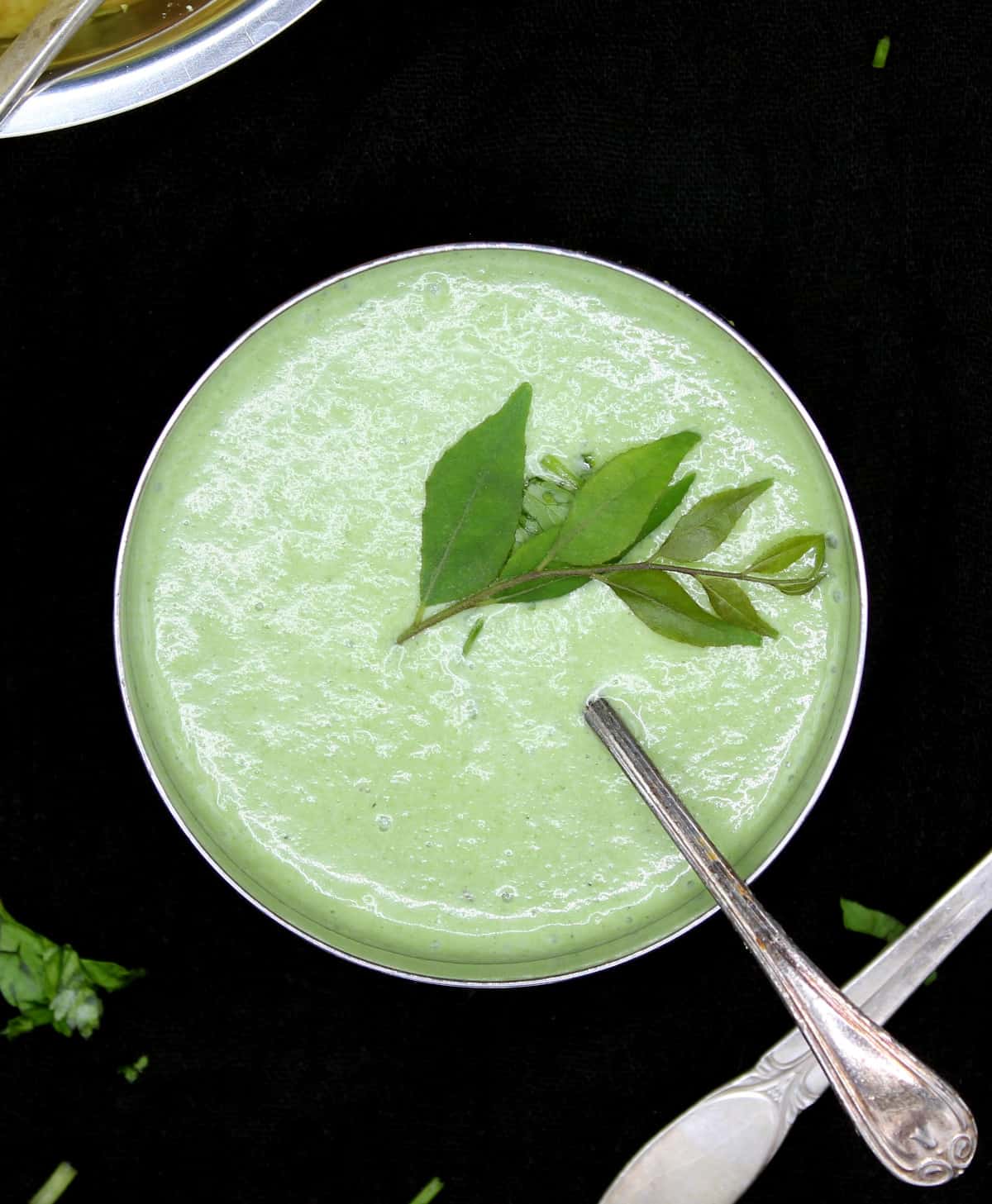
If you've been to an Indian restaurant, you've very likely eaten a coconut chutney, and fallen in love with it. This is the chutney served -- along with sambar, a south Indian dal -- as a side to dosas that spill across the plate, or moon-like idlis, or fluffy upma.
You tear off a bit of the crispy dosa, dunk it into the chutney, and you're in heaven.

It would be fair to say that there are as many types of coconut chutney as there are cooks, because no two individuals really make it the same way, and there can be so many permutations of the same handful of ingredients.
Some things remain constant, however: the coconut as the base, of course, and the essential flavors, like heat from chili peppers, either red and dry or green and fresh.
This is my coconut chutney, the way I've made it for years, with a unique combination of ingredients I've come up with after years of trying and testing. It goes perfectly with any south Indian tiffin, enhancing it, and it's even made a fan of Desi, who had never been a huge fan of coconut chutneys before he ate this one.
What we love about this chutney
- It has a combination of fresh and bright flavors.
- It's so creamy. Coconut chutney can sometimes taste dry, even if it's not really dry, but this one is going to turn out creamy and smooth.
- It's packed with healthful herbs.
- It goes with just about any south Indian dish, from an idli to a dosa to upma to uthappam to pongal and so many more.
- It takes all of five minutes to throw the ingredients together, and then another minute to zap it into smoothness in a blender.

Tips for making the best coconut chutney
- The secret to making this an extra creamy chutney is two kinds of coconut: the grated, unsweetened kind you can buy off the shelf, and full-fat coconut milk of the canned kind. This is a trick I've used for many years now, and shared with you in some past posts on chutneys. Although traditionally Indian cooks would use only freshly grated coconut in a coconut chutney, I came up with this approach because the grated coconut I'd buy in packets always appeared a bit dry. If you have freshly grated coconut -- one you grated yourself after cracking open the brown shell -- you could skip the coconut milk. But I'd recommend still using it because it will definitely make your chutney creamier.
- Use a big handful of herbs in the chutney for the most flavor. I use curry leaves, cilantro and mint. You can make coconut chutney without any herbs at all, but why would you?
- You don't have to use all three herbs. If you have more of cilantro and a little mint but no curry leaves, that's okay. Your chutney will taste different, but good different. Or make it just with cilantro or just mint. Again, different but good.
- Use green chili peppers, if you can, in the chutney. I like the fresh heat they add and they're herby without the sharp bite that a dry red pepper can sometimes add, making your throat feel like you swallowed a fireball. Both jalapeno peppers or serrano peppers will do very well here.
- Use ginger in your chutney for more complexity and healthfulness. I sometimes toss in a clove of garlic as well, and you definitely can.
- Add a squeeze of lemon into the chutney, to balance out the flavors.
- Use a blender, not a food processor, to blend your chutney and make it as smooth as possible.
- South Indian coconut chutneys are often finished with a tadka or tempering of oil, mustard seeds, curry leaves and--sometimes--red chili peppers. You can do this, and it's a nice touch, but I don't most of the time because the chutney is really flavorful as it is, and I'd rather not add the extra oil. If you do decide to do this, I'll add instructions in the recipe box.
Recipes to eat with the chutney


Coconut Chutney
Equipment
-
Blender
Ingredients
- 1/2 cup grated coconut
- 1/2 cup coconut milk (full fat, stir the coconut milk in the can, and then measure it out. Store the remaining in the freezer for future use)
- 2 sprigs (about 24 leaves) curry leaves
- 1/4 packed cup cilantro (coarsely chopped)
- 2 tbsp mint (coarsely chopped)
- 1 tsp ginger (crushed into a paste)
- Juice of 1 lemon (add little at a time, and then more according to your taste. I like my chutney a bit tart)
- 2 serrano peppers (coarsely chopped, or jalapeno peppers. Deseed and use less if sensitive to heat)
- Salt to taste
For optional tadka or tempering:
- 1 tbsp coconut oil
- 1 tsp mustard seeds
- 5-6 curry leaves
- 1 dry red chili pepper (broken into pieces)
Instructions
-
Place all the ingredients into the jar of a blender
-
Blend into a very smooth chutney
Optional tadka:
-
Heat the coconut oil. Add the mustard seeds, and when they sputter, add the red chili pepper and curry leaves. Stir quickly until peppers begin to change color, about 30 seconds, then turn off heat.
-
Carefully pour over the chutney and serve.
Nutrition
The post Coconut Chutney appeared first on Holy Cow! Vegan Recipes.
from Holy Cow! Vegan Recipes https://ift.tt/3m4MKt5

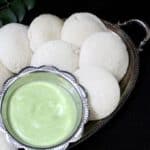
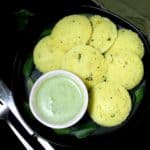
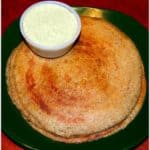
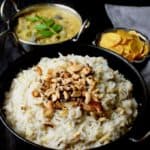





No comments:
Post a Comment